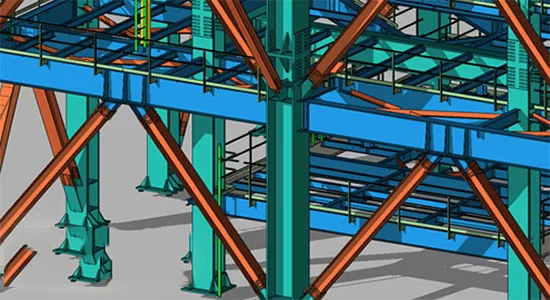Setting up structural drafting and detailing is a most important step involved in the design – fabrication/manufacturing – construction process. Steel detailing is the link that sets up communiqué between the designer and the fabricator and all the other concerned professionals like engineers, contractors and developers. Gaurang Trivedi is engineering consultant at TrueCADD, has wrote this article. We are presenting an excerpt. Besides, donning multiple hats, as a website manager and marketing in charge, he also oversees the editorial content, coordinating and managing the website, its news sections, blogs and social media promotions as well.
Now as steel detailing engrossed design, specification communication and finally fabrication of several small parts and big parts of a structure, it is important to maintain cent percent accuracy. Defect in even a distinct small part, can reason the whole structure to crumble. A small error or mistake, can cause serious time and cost damages.
There are two kinds of structural drafting and steel detailing drawings: shop drawings and erection drawings. Other than these two types of detailing drawings, other stages involved in steel detailing include anchor setting plans, connectivity diagrams, shop bolt summary, reinforced steel detailing, bill of materials etc.
The liability of creating all these detailing drawings lies on the steel detailer. The role and liabilities of a Steel detailer have however changed and transitioned as the construction industry has evolved and welcomes the digital revolution.
Evolutionary Industry and Changing Trends :-
The role of steel detailer is becoming complex and he has to repeatedly get better upon and polish his/her skill sets and knowledge base. Today having the knowledge of CAD software and making use of 3D models, is no more new to the profession.
So what knowledge is a steel detailer predictable to have in order to fit into the modern mold ?
Going by the latest trends and evolution in the industry, a steel detailer needs to be aware of :
1. Design collaboration models
2. Virtual design and construction technology like BIM
3. Field services such as item tracking
4. Scheduling and erection sequencing
5. Transportation and galvanizing assistance
Cloud based project hosting
Other than these distinct evolutionary changes, the detailer also has to be aware of the various standards set for various countries. These standards set by various institutions like National Institute of Steel Detailing (NISD), Euro Codes and British Standard Codes and American Institute of Steel Construction (AISC) for a variety of regions and places, must be put up with the steel detailer, so that buildings get the necessary permissions, approvals and certifications. Building structural drafting and steel detailing thus, plays a vital role and influences all types of projects like construction of residential structures, erection of commercial buildings, factories, institutes or any such infrastructural facilities.

